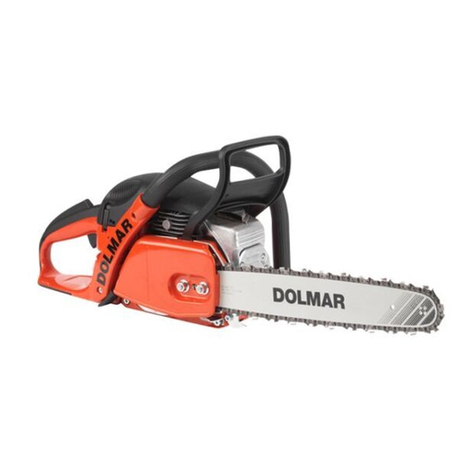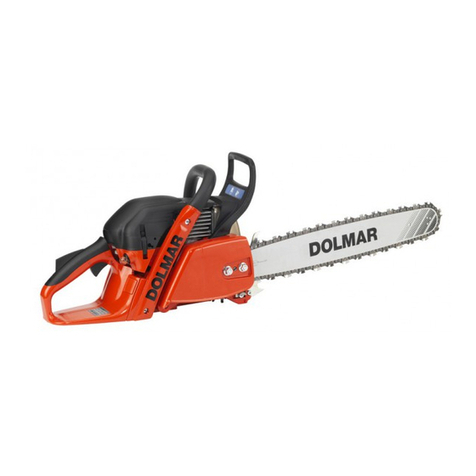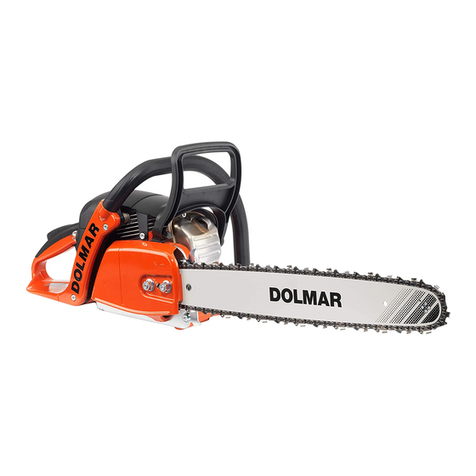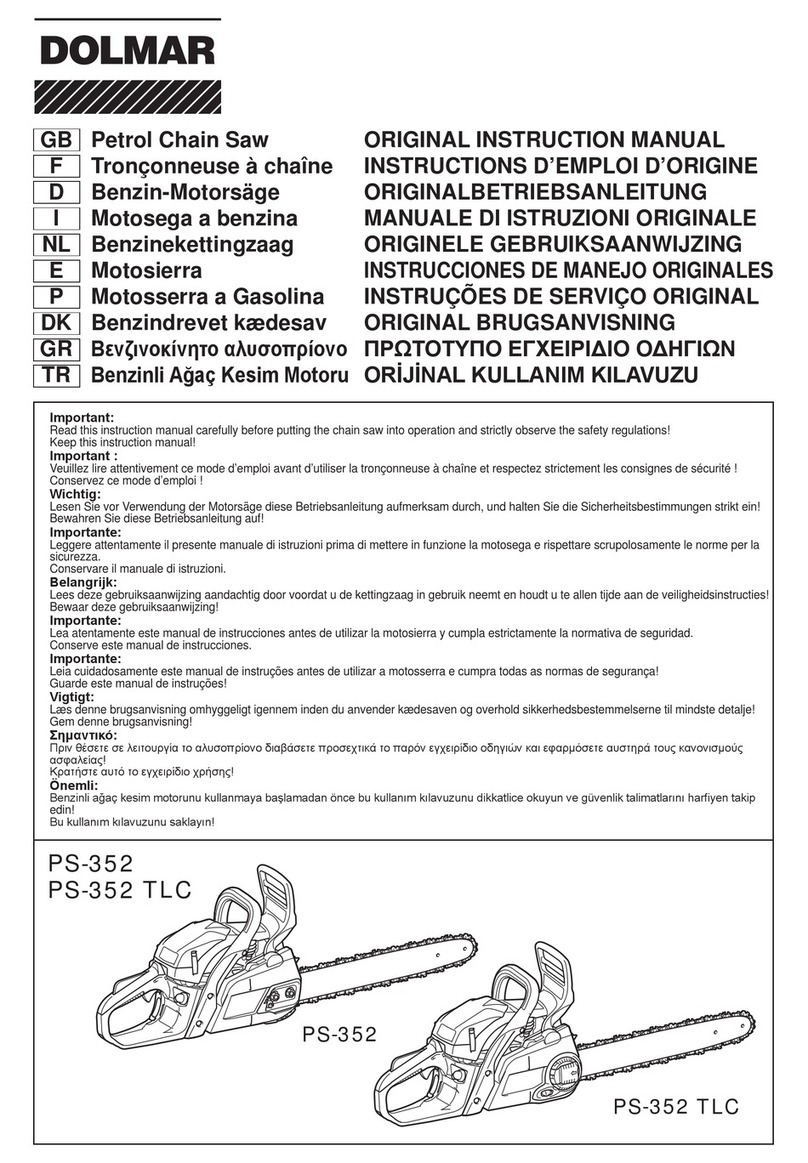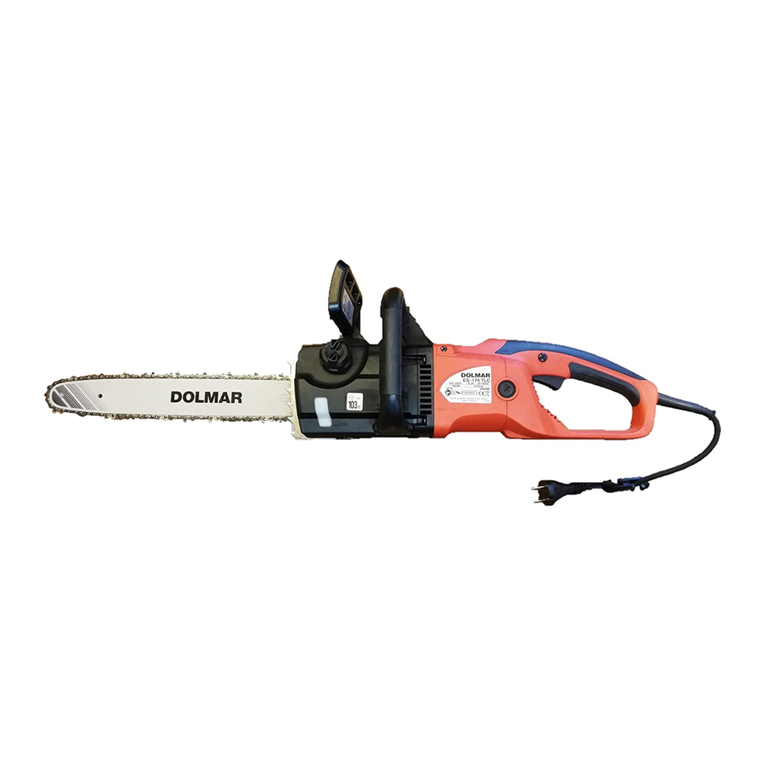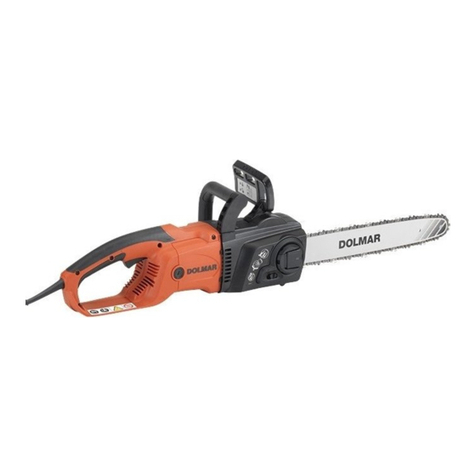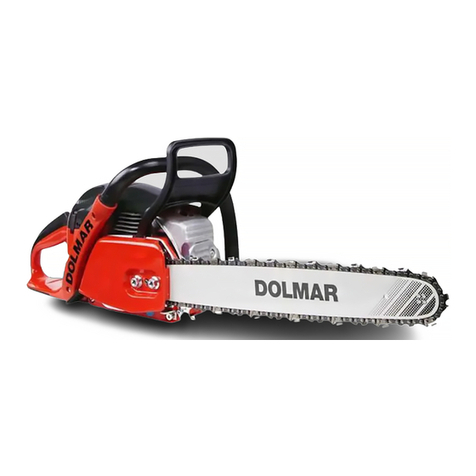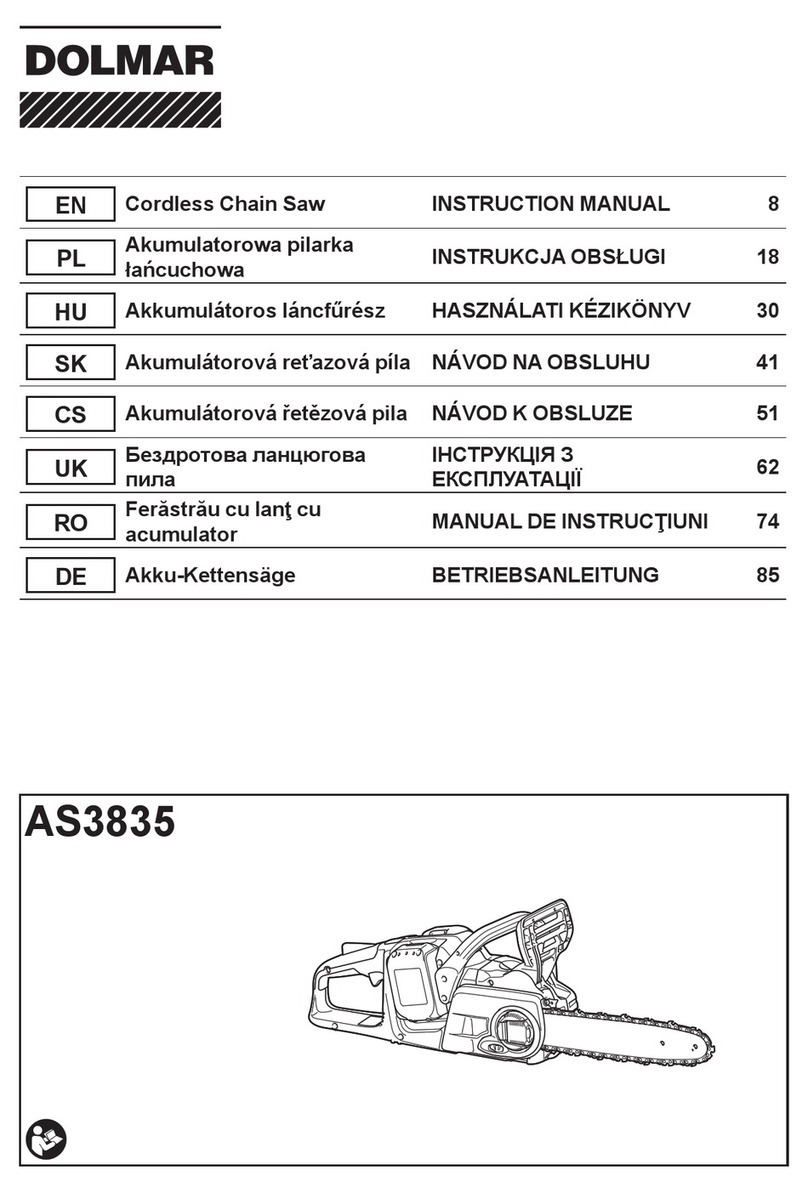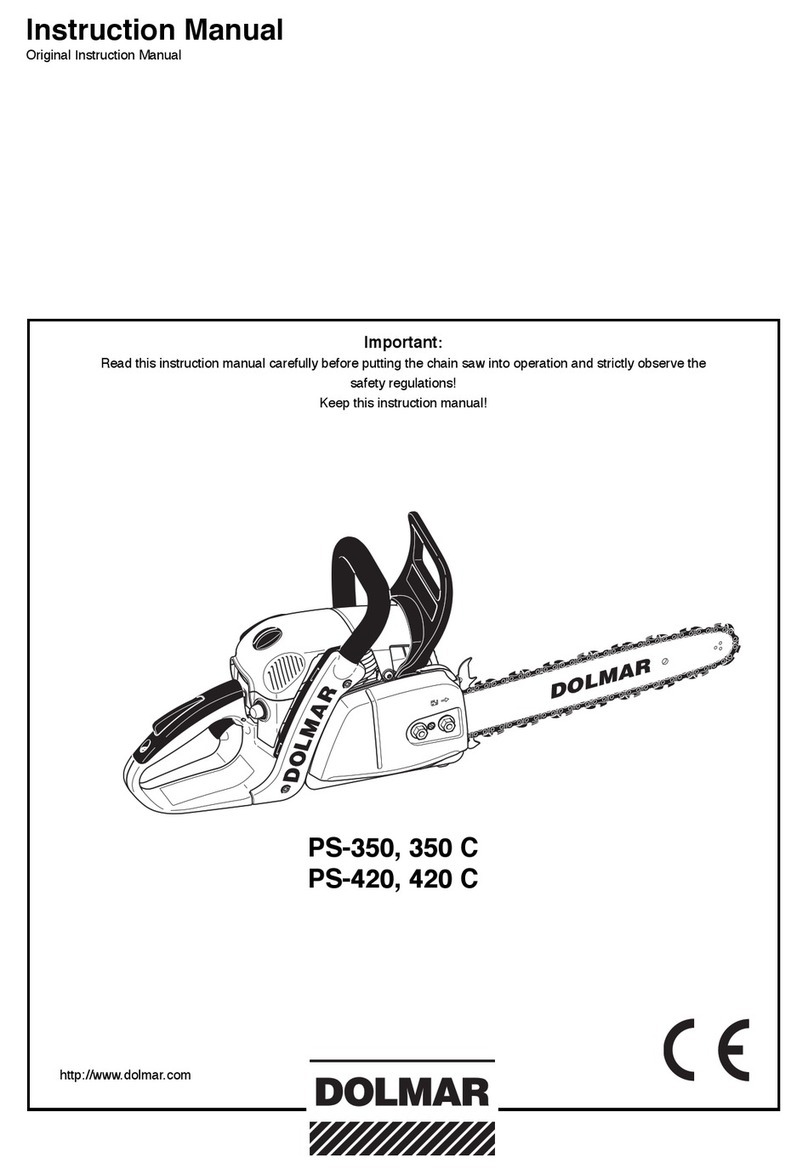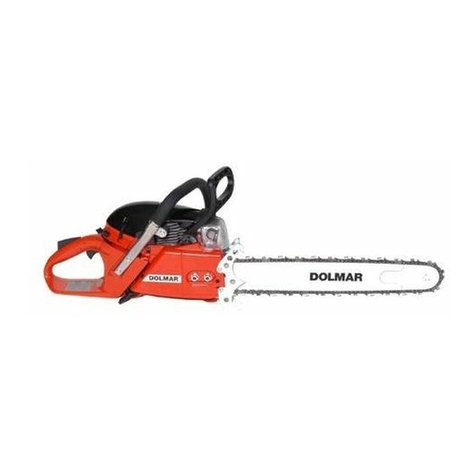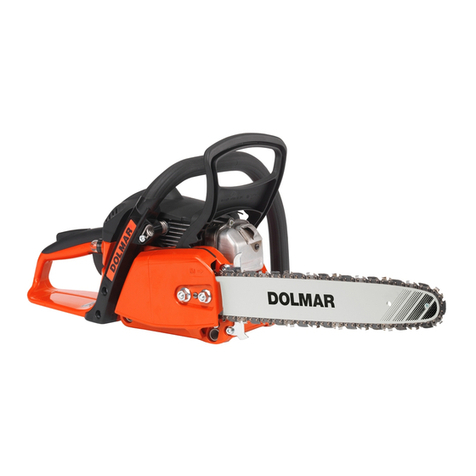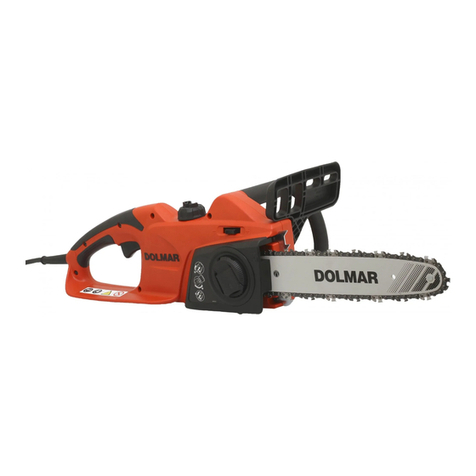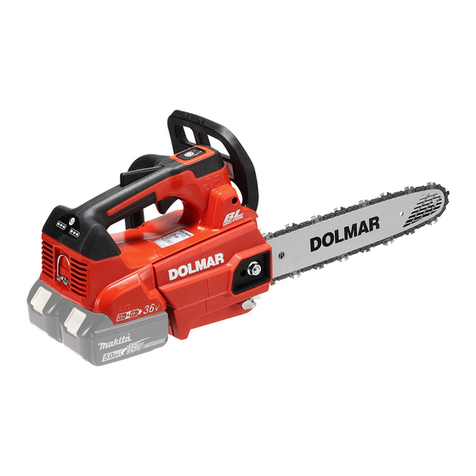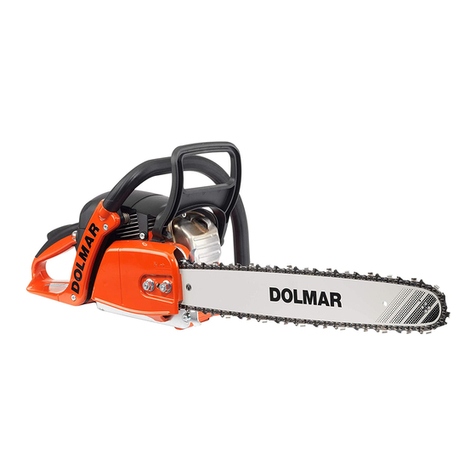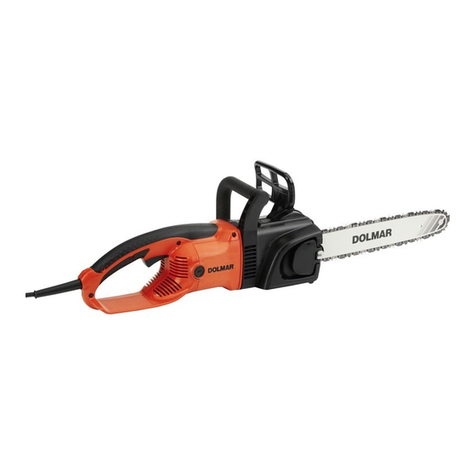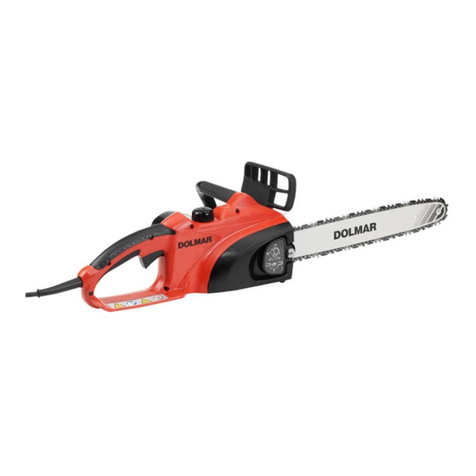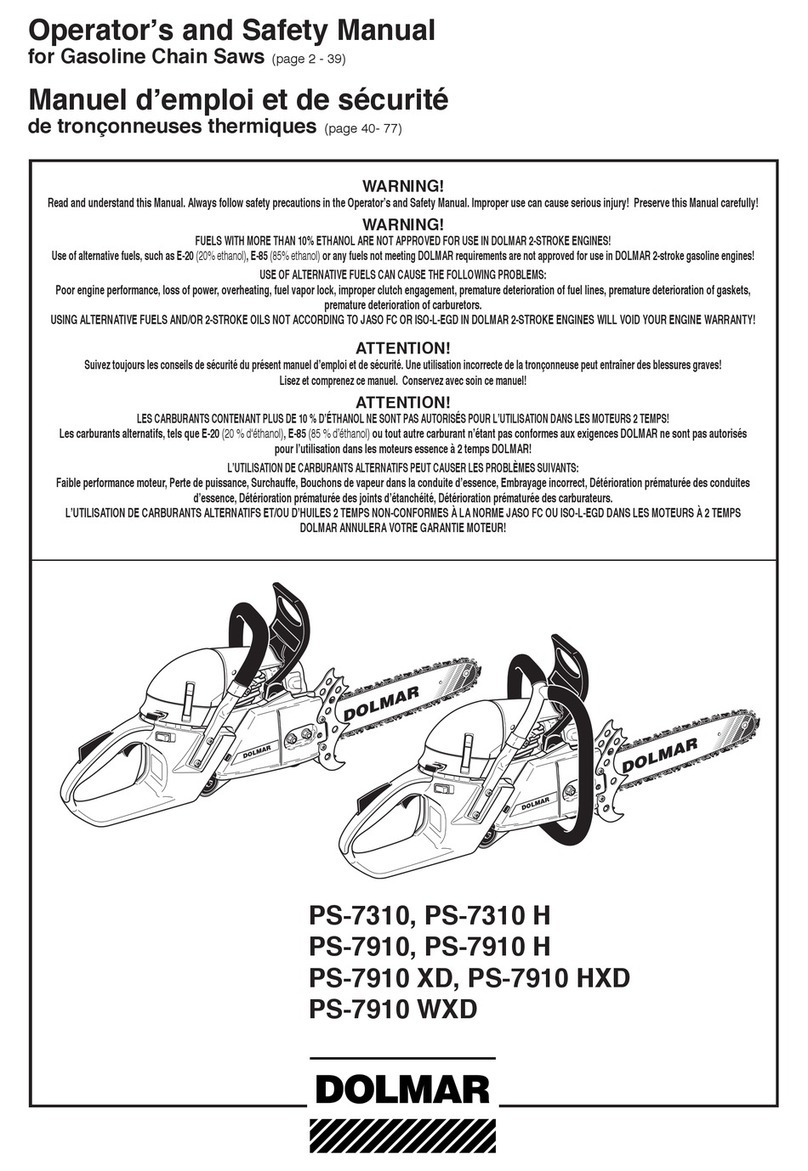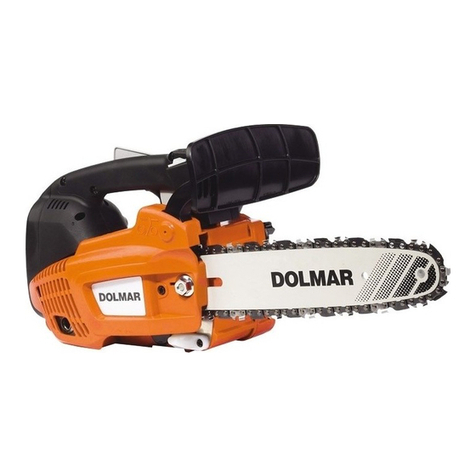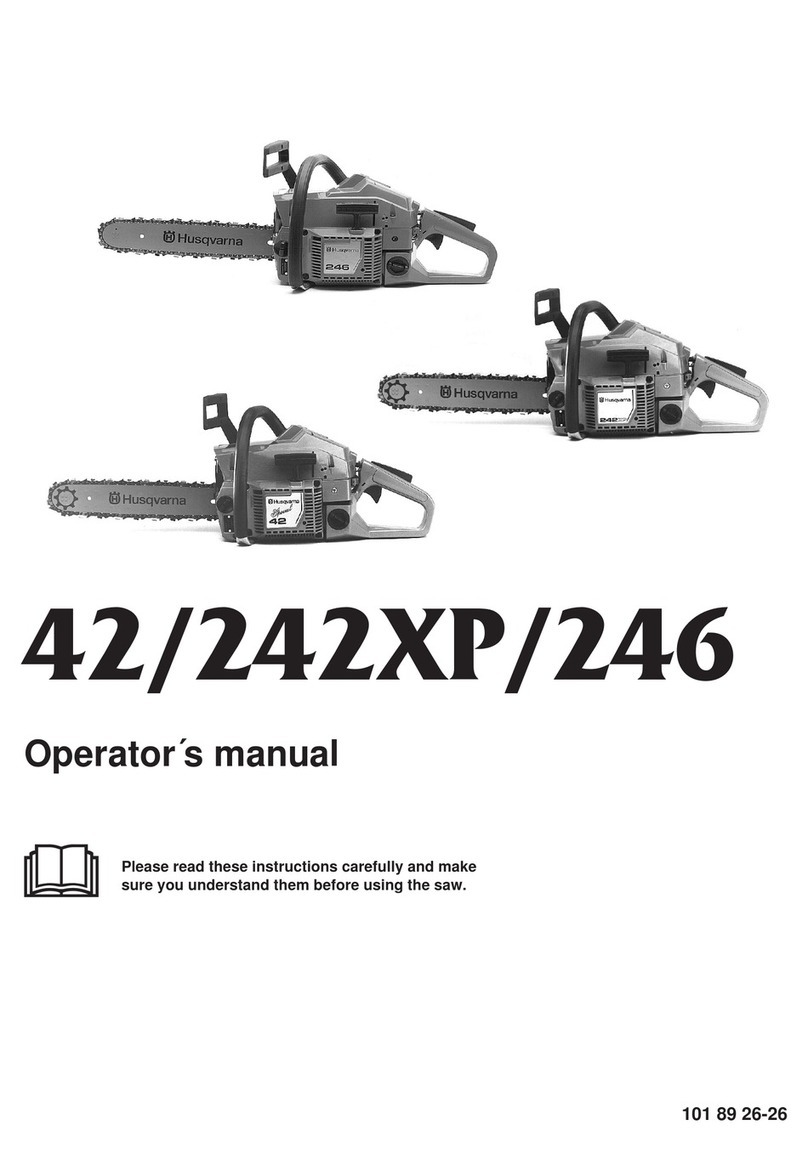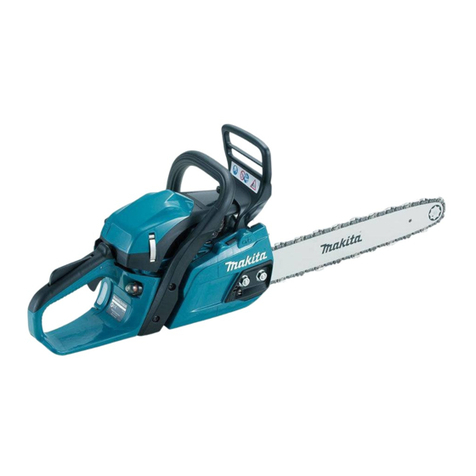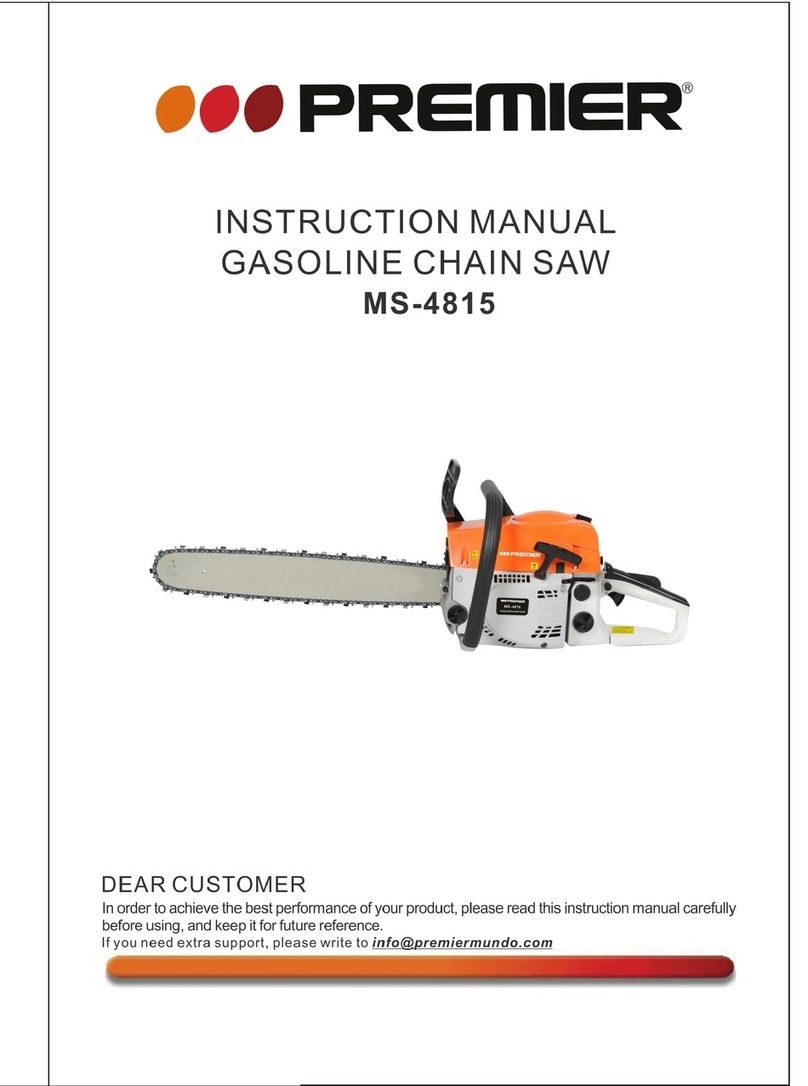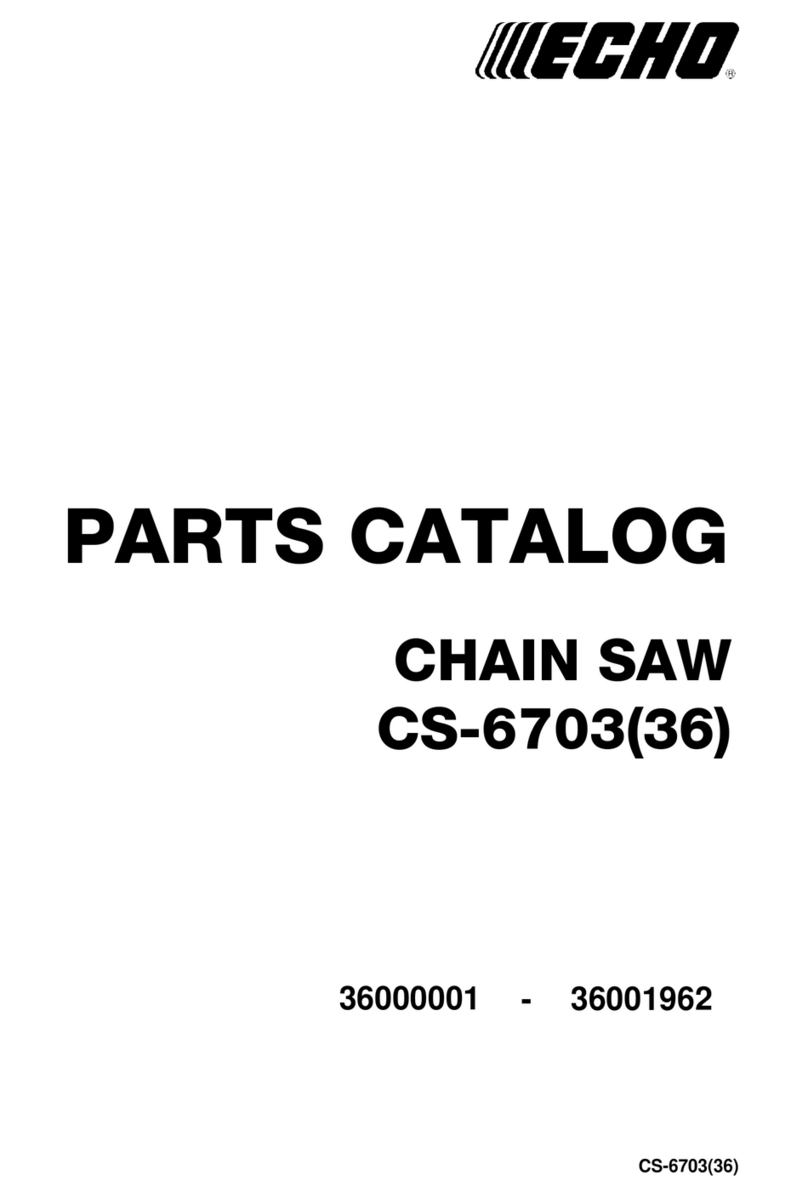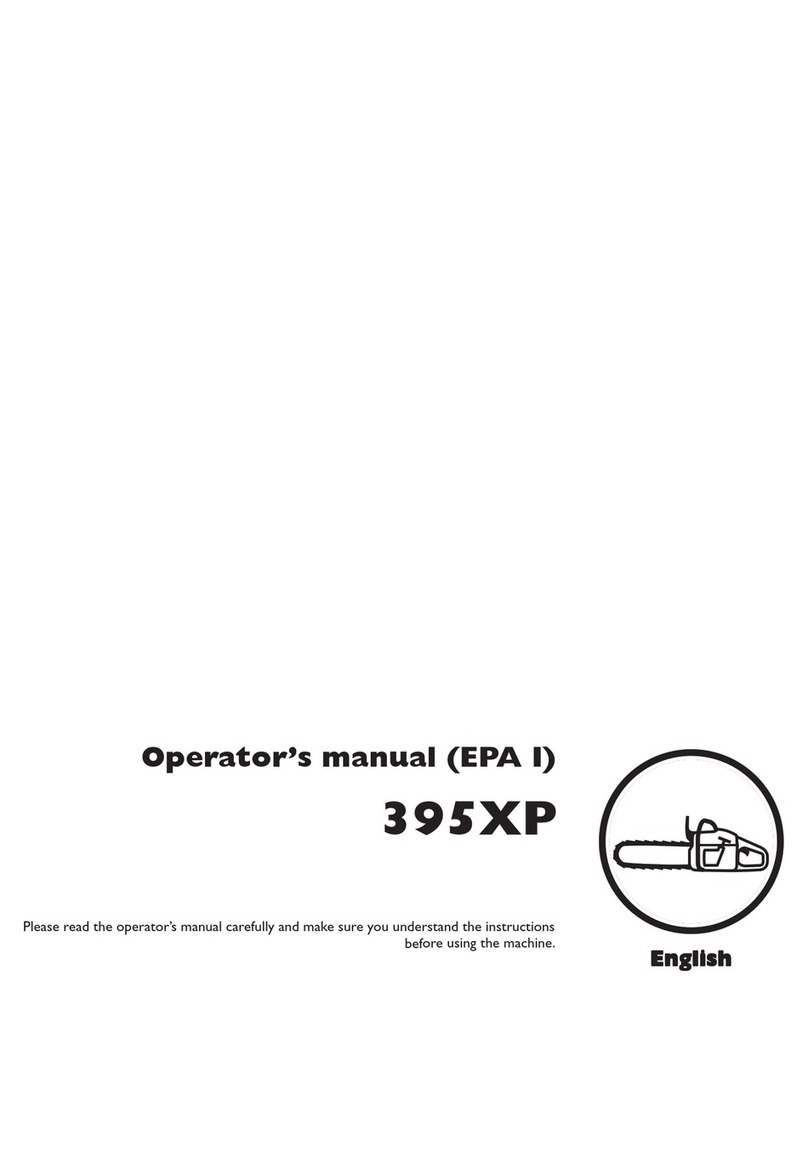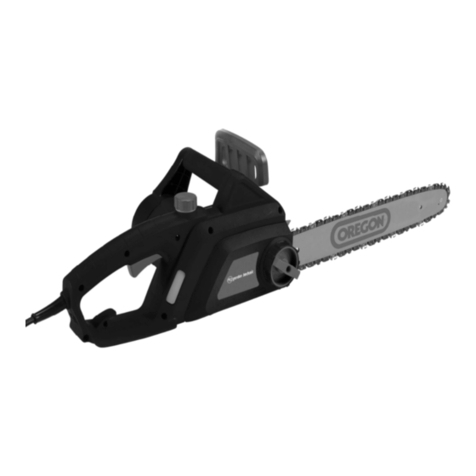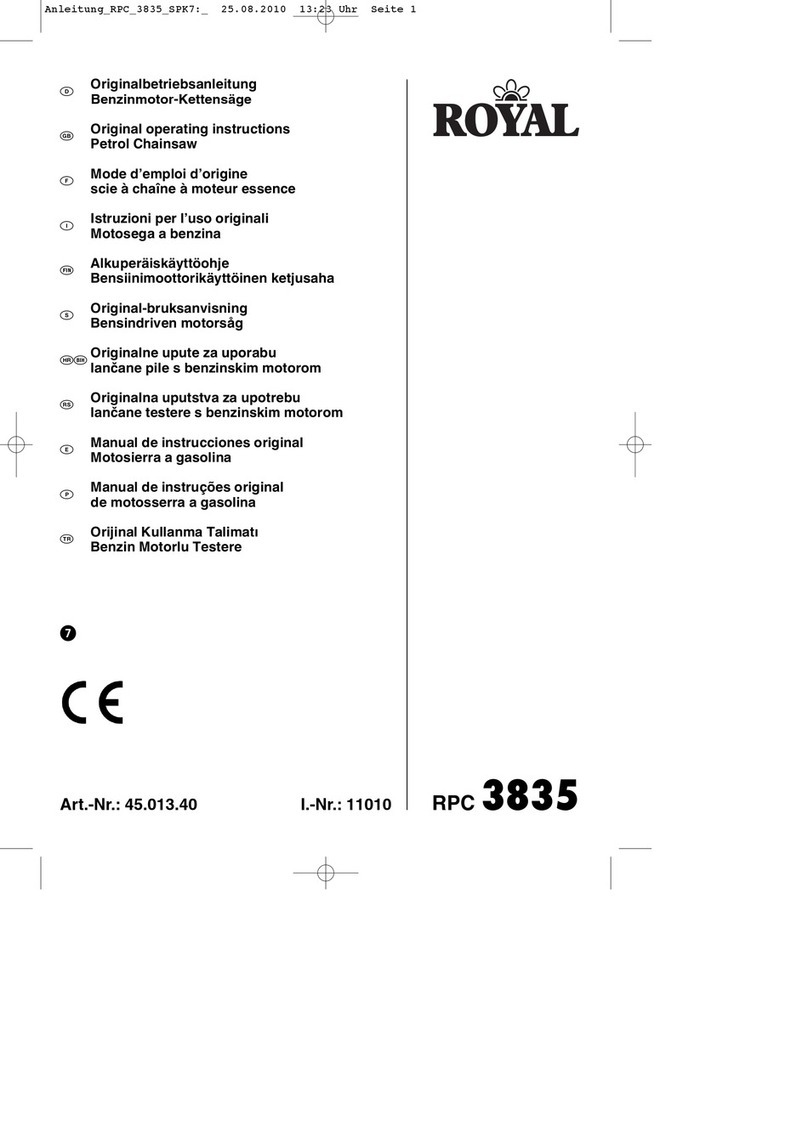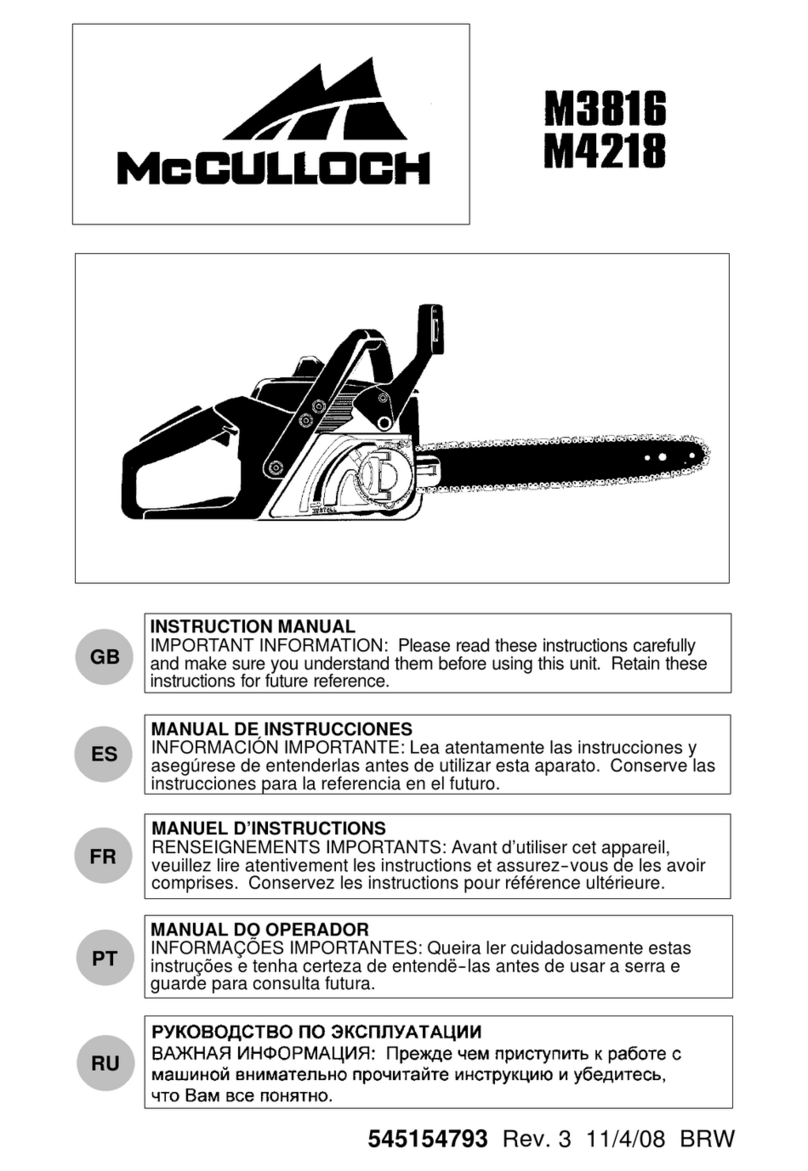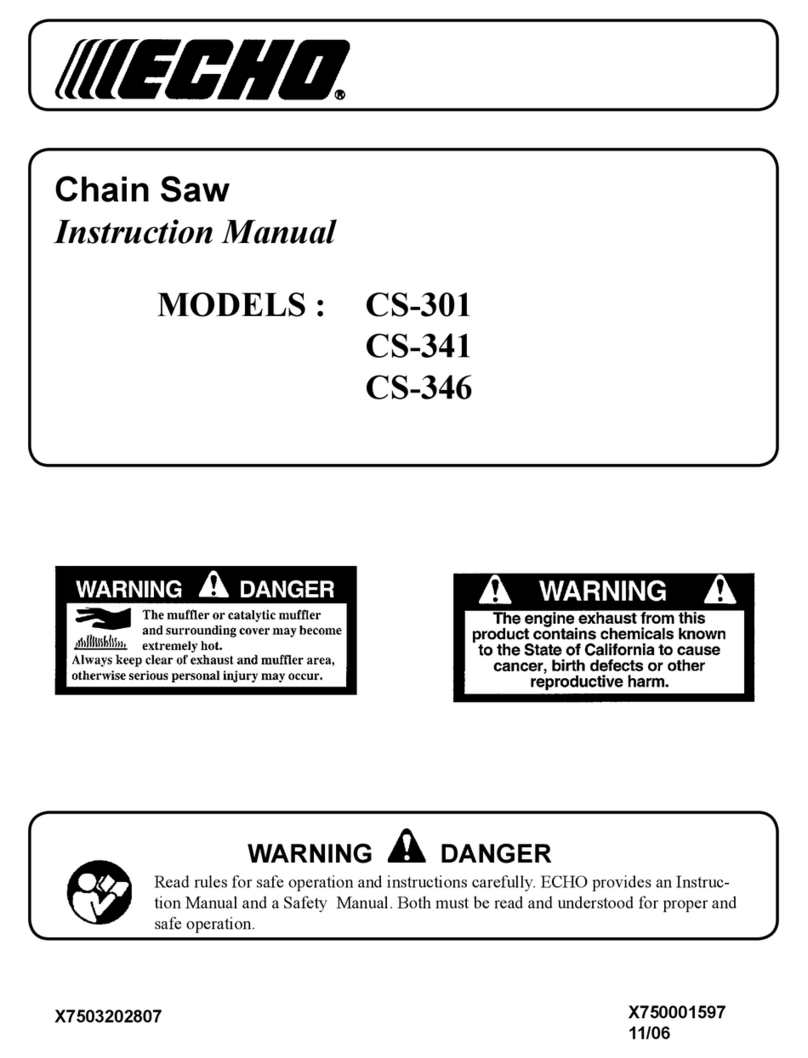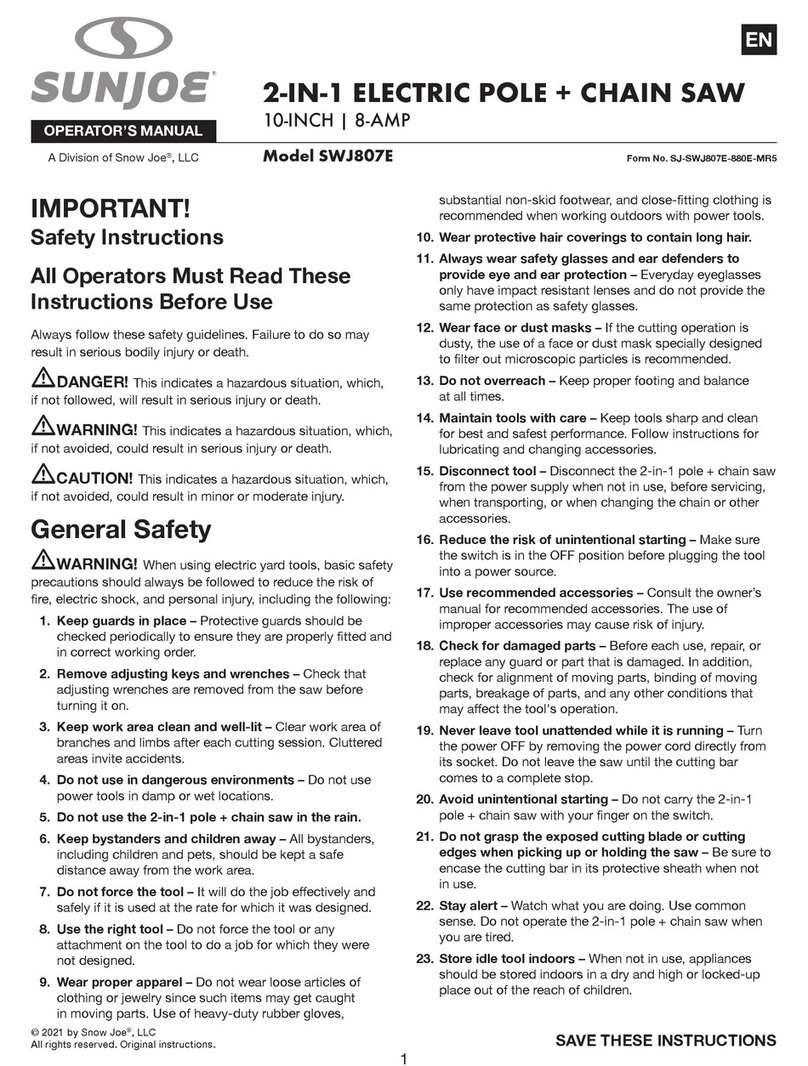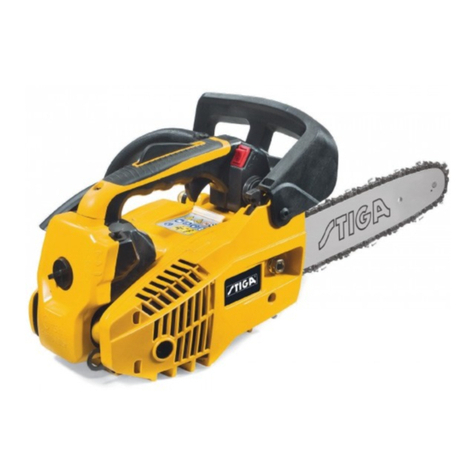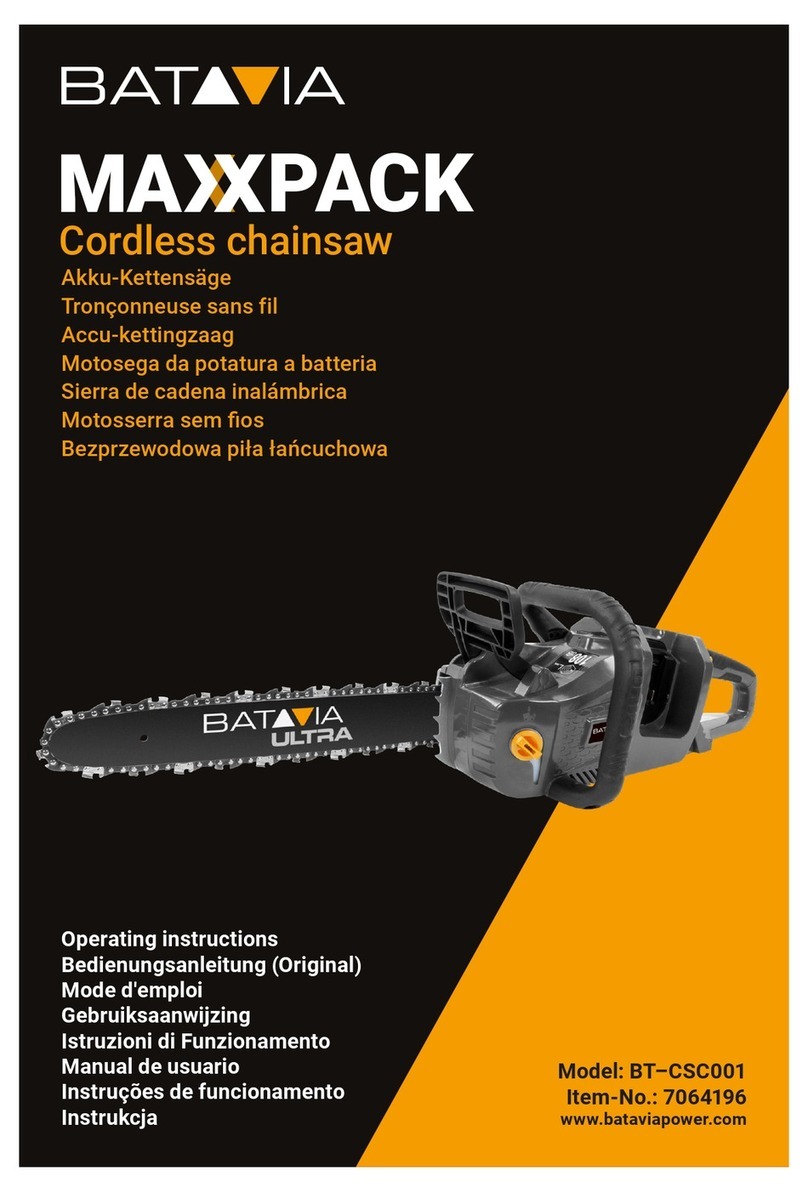
10 ENGLISH
Intended use
The tool is intended for cutting branches / pruning trees.
It is also suitable for tree service.
Noise
The typical A-weighted noise level determined accord-
ing to EN60745-2-13:
Sound pressure level (LpA) : 87.3 dB (A)
Sound power level (LWA) : 95.3 dB (A)
Uncertainty (K) : 3.0 dB (A)
Wear ear protection
Vibration
The vibration total value (tri-axial vector sum) deter-
mined according to EN60745-2-13:
Model AS-3625, AS-3626,
Work mode : cutting wood
Vibration emission (ah) : 7.0 m/s2
Uncertainty (K) : 1.6 m/s2
Model AS-3630
Work mode : cutting wood
Vibration emission (ah) : 6.3 m/s2
Uncertainty (K) : 1.5 m/s2
NOTE: The declared vibration emission value has
been measured in accordance with the standard test
method and may be used for comparing one tool with
another.
NOTE: The declared vibration emission value
may also be used in a preliminary assessment of
exposure.
WARNING: The vibration emission during actual
use of the power tool can differ from the declared
emission value depending on the ways in which the
tool is used.
WARNING: Be sure to identify safety measures
to protect the operator that are based on an estima-
tion of exposure in the actual conditions of use (taking
account of all parts of the operating cycle such as
the times when the tool is switched off and when it is
running idle in addition to the trigger time).
EC Declaration of Conformity
For European countries only
The EC declaration of conformity is included as Annex A
to this instruction manual.
General Power Tool Safety Warnings
WARNING Read all safety warnings and all
instructions. Failure to follow the warnings and instruc-
tions may result in electric shock, re and/or serious
injury.
Save all warnings and instructions for
future reference.
Cordless Chain saw safety
warnings:
1. Keep all parts of the body away from the saw
chain when the chain saw is operating. Before
you start the chain saw, make sure the saw
chain is not contacting anything. A moment of
inattention while operating chain saws may cause
entanglement of your clothing or body with the
saw chain.
2. When holding with both hands, always hold
the chain saw with your right hand on the rear
handle and your left hand on the front handle.
Holding the chain saw with a reversed hand con-
guration increases the risk of personal injury and
should never be done.
3. Hold the power tool by insulated gripping
surfaces only, because the saw chain may con-
tact hidden wiring. Saw chains contacting a "live"
wire may make exposed metal parts of the power
tool "live" and could give the operator an electric
shock.
4. Wear safety glasses and hearing protection.
Further protective equipment for head, hands,
legs and feet is recommended. Adequate pro-
tective clothing will reduce personal injury by ying
debris or accidental contact with the saw chain.
5. Always keep proper footing. Slippery or unsta-
ble surfaces may cause a loss of balance or con-
trol of the chain saw.
6. When cutting a limb that is under tension be
alert for spring back. When the tension in the
wood bers is released the spring loaded limb may
strike the operator and/or throw the chain saw out
of control.
7. Use extreme caution when cutting brush and
saplings. The slender material may catch the saw
chain and be whipped toward you or pull you off
balance.
8. Carry the chain saw by the front handle with
the chain saw switched off and away from your
body. When transporting or storing the chain
saw always t the guide bar cover. Proper
handling of the chain saw will reduce the likelihood
of accidental contact with the moving saw chain.
9. Follow instructions for lubricating, chain ten-
sioning and changing accessories. Improperly
tensioned or lubricated chain may either break or
increase the chance for kickback.
10. Keep handles dry, clean, and free from oil and
grease. Greasy, oily handles are slippery causing
loss of control.
11. Cut wood only. Do not use chain saw for pur-
poses not intended. For example: do not use
chain saw for cutting plastic, masonry or non-
wood building materials. Use of the chain saw
for operations different than intended could result
in a hazardous situation.
12. Causes and operator prevention of kickback:
Kickback may occur when the nose or tip of the
guide bar touches an object, or when the wood
closes in and pinches the saw chain in the cut.
Tip contact in some cases may cause a sudden
reverse reaction, kicking the guide bar up and
back towards the operator.
